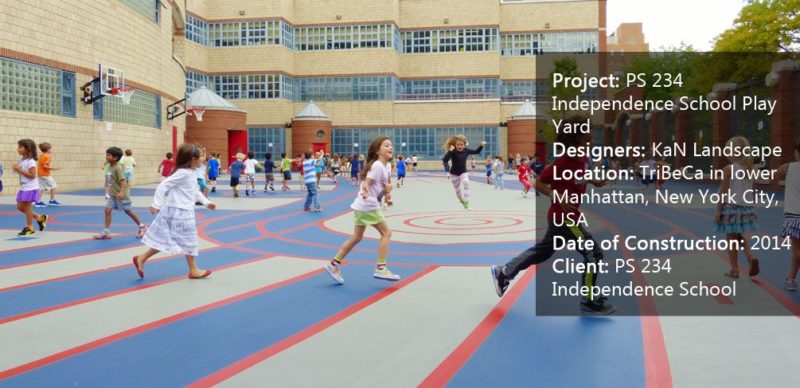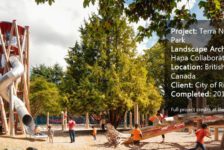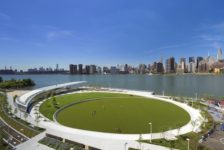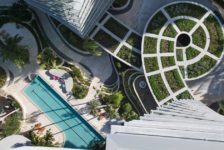PS 234 Independence School Play Yard, by KaN Landscape, in TriBeCa, New York City, USA. A classroom only creates an illusion of enlightenment. A learning atmosphere is where kids can express themselves in their own way, explore their surroundings, and think freely. Children need a space where they can create their own world, free of fear and judgment, and at the same time learn through observing their surrounding environment. When designed thoughtfully, schoolyards can offer such an atmosphere. In the fall of 2014, KaN Landscape designed a new schoolyard for PS 234 Independence School, the first public school located in historic TriBeCa in lower Manhattan. The school was in need of a play yard with diversified sports opportunities and a play experience for children ranging in age from kindergarten to fifth grade. In response, the design team thought of creating a space that would be intriguing, interactive and fun.

PS 234 Independence School Play Yard. Photo credit: Nadej Hocini + Karine Duteil
PS 234 Independence School Play Yard
The Magical School Building The building that houses PS 234, designed by Dattner Architects in 1988, is rich in history. It provides pupils and the people of the city with lessons about the area’s architectural history, construction techniques, and the history of the city and its waterfront. The brick arches, curved corners around the exterior perimeter wall, and the deep industrial windows all reflect the area’s 19th century mercantile buildings, while the cylindrical turrets and castle towers at both ends seem like magical fairytale towers and also hearken back to the former river’s edge.
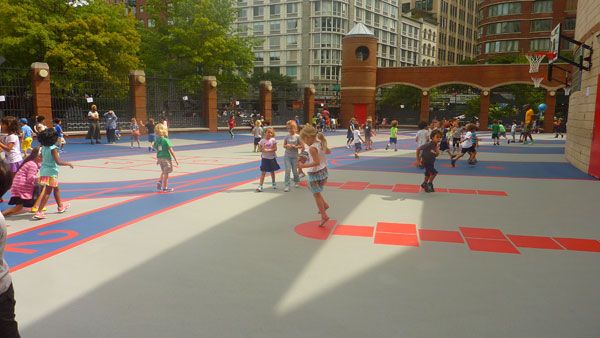
PS 234 Independence School Play Yard. Photo credit: Nadej Hocini + Karine Duteil
- How “A Toddlers Playground” Inspires Learning
- Zorlu Center, The Playground Where Imagination Comes to Play
- What are the Benefits of Natural Play?
Thus, the given program (basketball, track, baseball, and games such as four square, hopscotch, scully, etc.) was integrated and interpreted into a dynamic and playful layout revealing the strong architectural identity of the building.
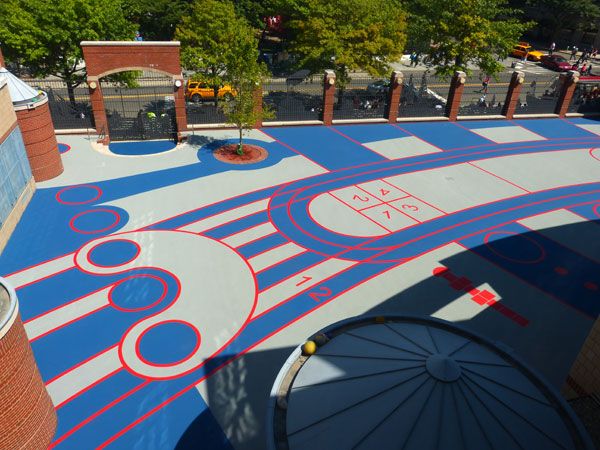
PS 234 Independence School Play Yard. Photo credit: Nadej Hocini + Karine Duteil
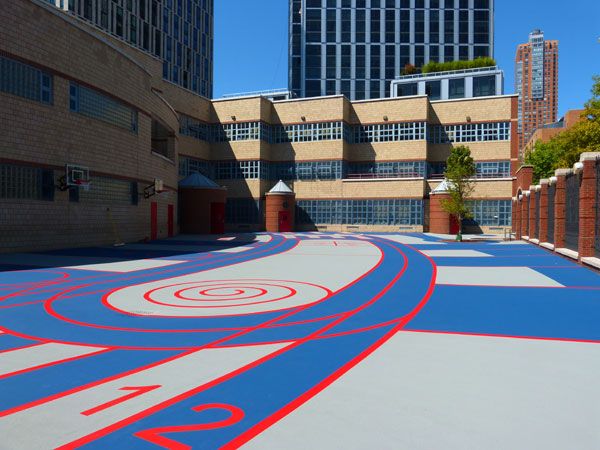
PS 234 Independence School Play Yard. Photo credit: Nadej Hocini + Karine Duteil
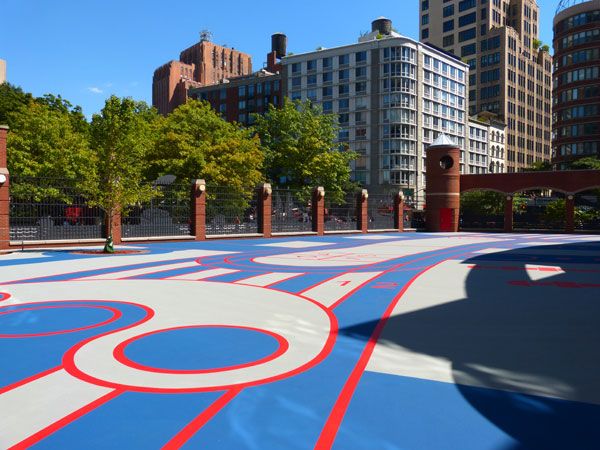
PS 234 Independence School Play Yard. Photo credit: Nadej Hocini + Karine Duteil

PS 234 Independence School Play Yard. Photo credit: Nadej Hocini + Karine Duteil

PS 234 Independence School Play Yard. Photo credit: Nadej Hocini + Karine Duteil
Recommended Reading:
- Landscape Architecture: An Introduction by Robert Holden
- Landscape Architecture, Fifth Edition: A Manual of Environmental Planning and Design by Barry Starke
Article by Farah Afza
Published in Blog


